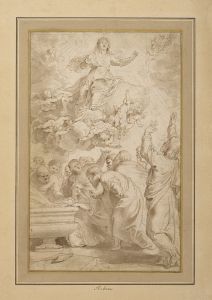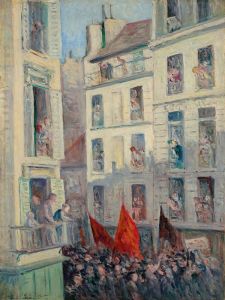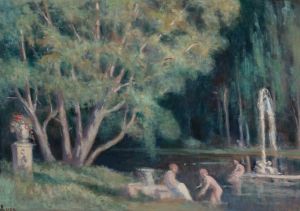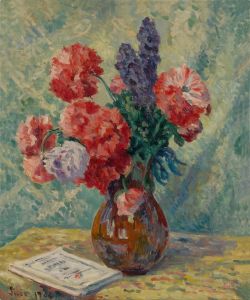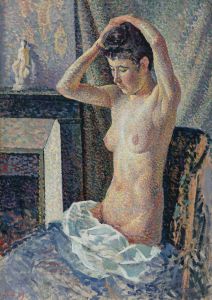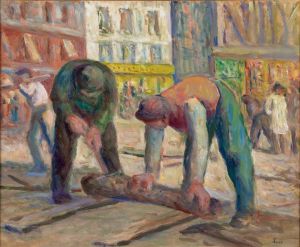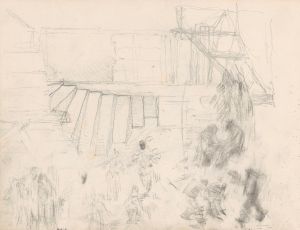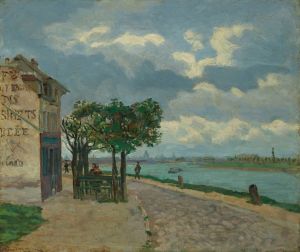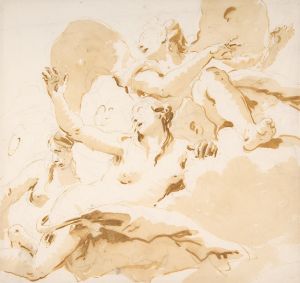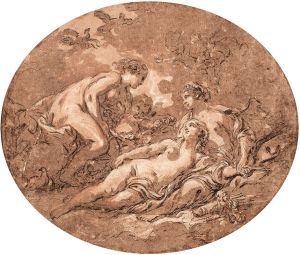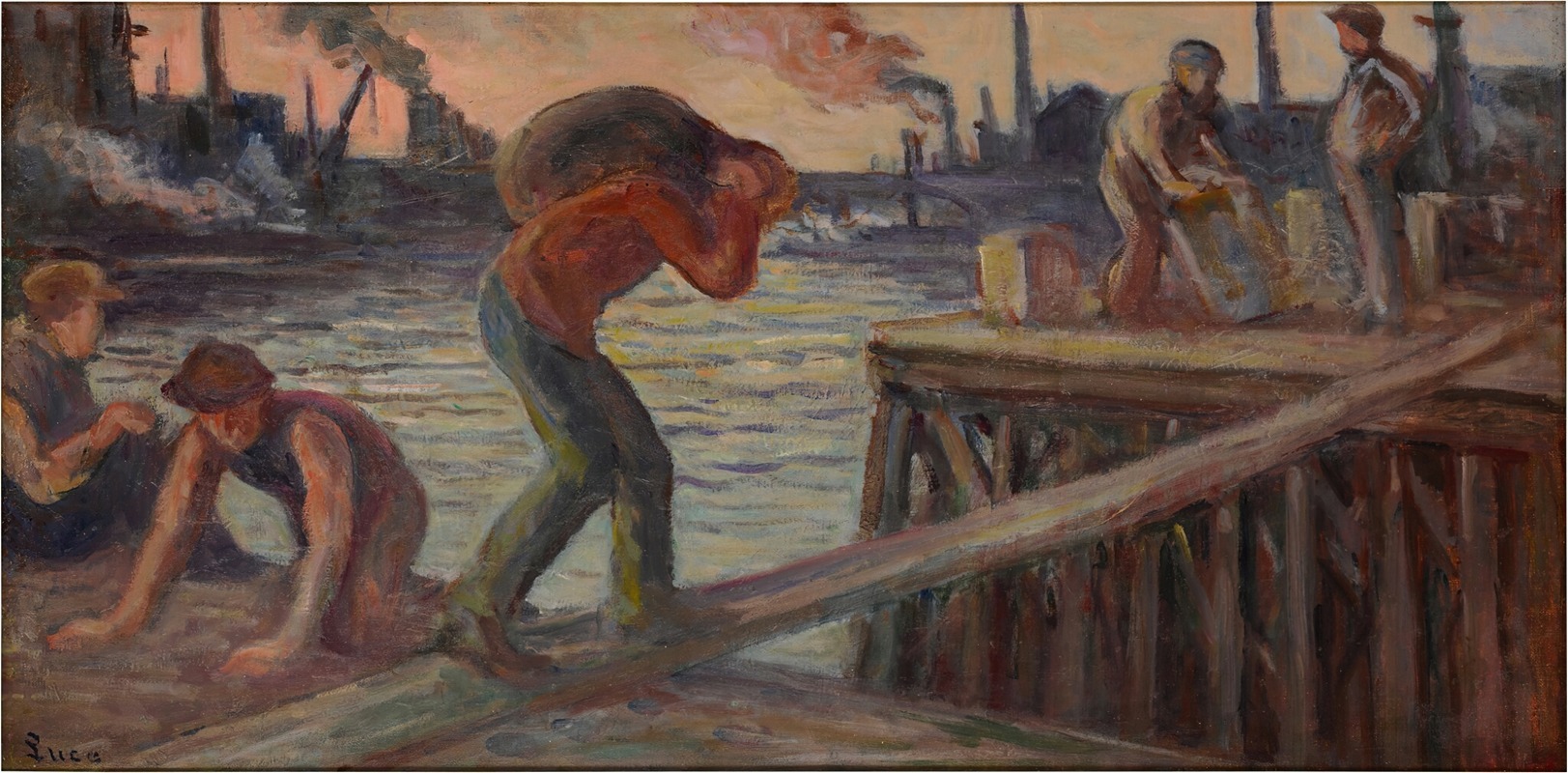
Le Déchargement de la péniche
A hand-painted replica of Maximilien Luce’s masterpiece Le Déchargement de la péniche, meticulously crafted by professional artists to capture the true essence of the original. Each piece is created with museum-quality canvas and rare mineral pigments, carefully painted by experienced artists with delicate brushstrokes and rich, layered colors to perfectly recreate the texture of the original artwork. Unlike machine-printed reproductions, this hand-painted version brings the painting to life, infused with the artist’s emotions and skill in every stroke. Whether for personal collection or home decoration, it instantly elevates the artistic atmosphere of any space.
Maximilien Luce was a prominent French Neo-Impressionist painter known for his vibrant depictions of urban and rural life. One of his notable works is "Le Déchargement de la péniche" (The Unloading of the Barge), which exemplifies his commitment to capturing the everyday activities of working-class individuals with a keen eye for detail and a vibrant use of color.
"Le Déchargement de la péniche" is a painting that reflects Luce's interest in the lives of laborers and the industrial landscapes of late 19th and early 20th century France. The painting depicts a scene along a riverbank where workers are engaged in the unloading of a barge. This subject matter is consistent with Luce's broader oeuvre, which often focused on the themes of labor and industry, portraying them with a sense of dignity and respect.
Luce was associated with the Neo-Impressionist movement, which was characterized by the use of pointillism, a technique developed by Georges Seurat and Paul Signac. This technique involves applying small, distinct dots of color to the canvas, which blend together when viewed from a distance to create a luminous effect. While Luce adopted this technique, he also maintained a degree of flexibility in his approach, sometimes using broader strokes and a more varied palette to achieve the desired effect.
In "Le Déchargement de la péniche," Luce's use of color and light is particularly noteworthy. The painting likely captures the interplay of natural light on the water and the figures, creating a dynamic and lively composition. The workers are depicted with a sense of movement and purpose, emphasizing the physicality of their labor. The scene is both a celebration of the workers' efforts and a reflection of the industrial progress of the time.
Maximilien Luce was deeply influenced by the social and political climate of his era. He was an anarchist and often used his art to express his political beliefs, advocating for social justice and workers' rights. While "Le Déchargement de la péniche" is primarily a depiction of a quotidian scene, it can also be interpreted as a subtle commentary on the dignity of labor and the importance of the working class in the fabric of society.
Luce's work, including "Le Déchargement de la péniche," is celebrated for its ability to capture the essence of everyday life with a sense of immediacy and vibrancy. His paintings are held in high regard for their technical skill and their empathetic portrayal of human subjects. Today, Luce's paintings can be found in various museums and private collections, where they continue to be appreciated for their artistic and historical significance.
Overall, "Le Déchargement de la péniche" is a testament to Maximilien Luce's talent as a painter and his commitment to depicting the realities of his time with both beauty and integrity.





